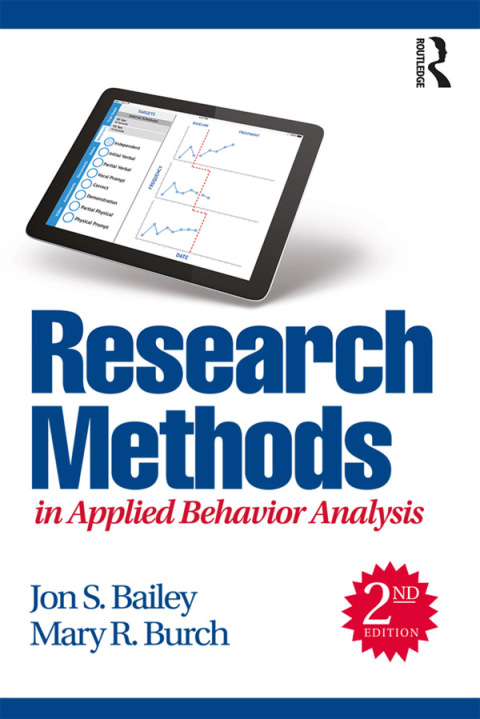Description
Efnisyfirlit
- Cover
- Title
- Copyright
- Dedication
- Contents
- List of Figures and Tables
- Preface
- Acknowledgments
- Part I A Brief Introduction to Behavior Analysis Research
- The Operant Research Model
- Important Methodological Milestones
- Science and Clinical Success
- A Journal Is Born
- A Paradigm Shift
- The Dimensions of Applied Behavior Analysis
- Summary
- How to Use This Book
- Part II Research Methods in Applied Behavior Analysis: 10 Steps for Successful Research
- Step 1: Determine Your “Research-Ready” Situation; Select Your General Topic; Find a Great Setting and Participants
- Situation 1: “Free Agent”
- Situation 2: “Designated Hitter”
- Situation 3: “Under Contract”
- Summary
- Step 2: Narrow Down Your Research Question
- Situation 1: “Free Agent”
- Situation 2: “Designated Hitter”
- Situation 3: “Under Contract”
- Summary
- Step 3: Decide on and Define Your Dependent and Independent Variables
- Situation 1: “Free Agent”
- Situation 2: “Designated Hitter”
- Situation 3: “Under Contract”
- Summary
- Step 4: Establish Social Validity
- Three Features of Social Validation
- A Brief History of Social Validation
- Four Operational Steps of Social Validation
- Examples of Research Using Social Validation
- Habilitative Validity
- Summary
- Step 5: Create Your Data Collection Systems
- Dimensions of Behavior
- Complex Behaviors
- Types of Measurement
- Setting Up Your Data Collection System
- Summary
- Step 6: Pilot Test Your Key Variables
- Pilot Testing Your Dependent Variable(s) and Measurement System
- Pilot Testing Your Independent Variable(s)
- Summary
- Step 7: Identify the Appropriate Research Design
- Notes to Beginning Researchers
- The Purpose of Research Design
- Characteristics and Logic of Single-Case Design Research
- Exploratory Methods/Weak “Designs”
- Behavior Analysis Research Designs
- Multiple-Baseline Designs
- Limiting Conditions of the Multiple-Baseline Design
- Multielement Baseline Designs (aka Alternating Treatments Design)
- Summary
- Step 8: Conduct an Ethics Check
- Ethics: The 8th Dimension of Behavior Analysis
- Free Agents, Designated Hitters and Under Contract Researchers
- The BACB’s Professional and Ethical Compliance Code
- Summary
- Step 9: Carry Out Your Research Project
- Free Agents, Designated Hitters and Under Contract Researchers
- Preparing Your Contact Person
- Preparing Your Observers
- Final Preparations
- Getting Ready for Day 1
- Preparing for the First Intervention
- Managing the Rest of Your Study
- Wrapping Up Your Study
- Summary
- Step 10: Graph and Analyze Your Data
- The Virtues of Visual Analysis
- What to Look for When Analyzing Your Data
- Guidelines for the Design of Graphs in Applied Behavior Analysis
- What Next?
- Part III Evaluating Behavioral Research
- Instructions to Students
- Questions to Ask About Single-Case Design Studies
- Fatal Flaws to Watch Out For
- Part IV Using Applied Research Findings in Clinical and Educational Settings
- Background
- Instructions to Students
- The Questions
- The Adaptations
- Part V Going Public
- Giving a Data or Other Presentation
- Ignite Presentations
- Presenting a Poster
- Publishing Your Research
- Summary
- References
- Index
- About the Authors








Reviews
There are no reviews yet.